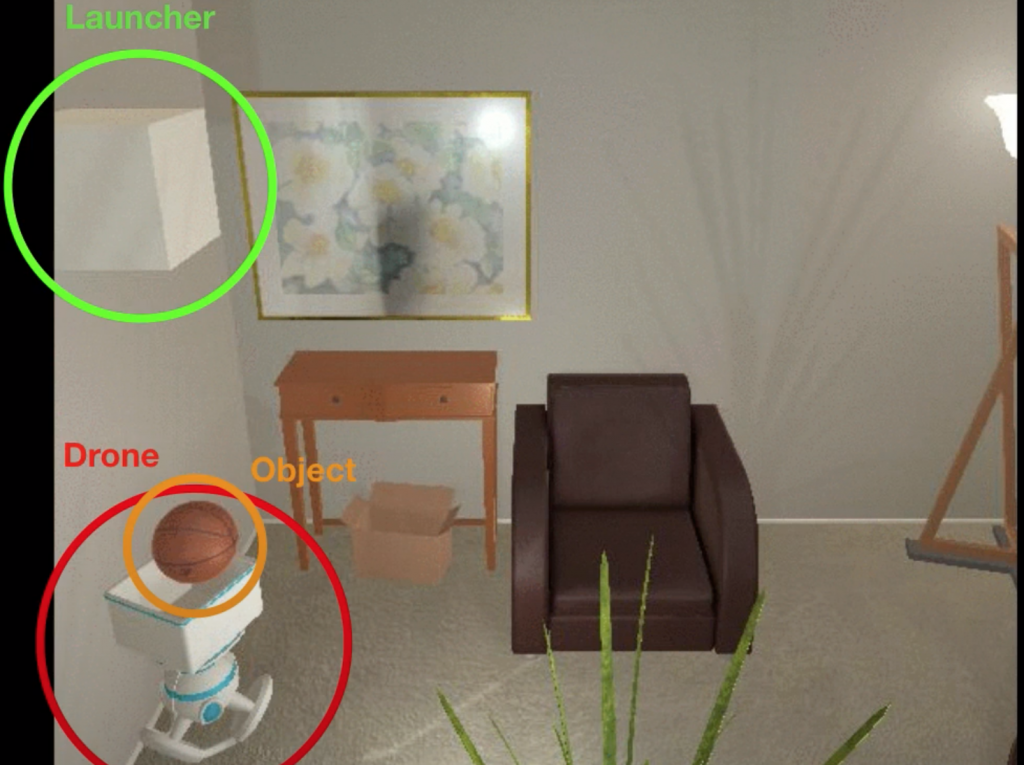
A still from an animation created by the Allen Institute of Artificial Intelligence shows how the drone works.
Drones Rise to New Level as Cars Get a Voice from Alexa
Technology of all kinds are influenced by AI. But some new tech developments are moving life forward with an interesting twist. One example, for instance, is smart contact lenses that give glucose levels wearers with diabetes.
Most recently, AI researchers from the Allen Institute of Artificial Intelligence and the University of Washington trained a drone agent with a box on top to catch a range of 20 objects in a simulated environment.
Venturebeat.com wrote about how drones were able to catch the objects. Why, you might ask? Although the article doesn’t explain, we imagine it could be related to military uses, assistance in disaster areas, business uses (throwing a package to a drone outside of a window?), or possibly for disabled users.
Toasters were the most accurately caught item (64%), while toilet paper was the least (0%).
Will It Catch On?
If the virus continues to keep us locked in our homes, a brisk game of droneball might be fun if it wouldn’t cause too much damage to your house. Keeping in mind the video is all simulation. They used 20,000 throws per object to train the drone. In real life, it might take a lot more. Could your house stand the wear and tear of training? We are joking, of course, but you get the idea.
For the study, a launcher threw each object two meters (6.5 feet) toward a drone agent. Each simulation was set in a living room and took place in the AI2-THOR photo-realistic simulated environment. In the virtual environment, the weight, size, and structure of objects determined the way they were thrown, the velocity of a throw, and whether an object bounced off a wall. In every trial scenario, the launcher was positioned at roughly above average human height. The model was trained with the launcher randomly positioned for each throw.
“Our proposed solution is an adaptation of the model-based reinforcement learning paradigm. More specifically, we propose a forecasting network that rolls out the future trajectory of the thrown object from visual observation. We integrate the forecasting network with a model-based planner to estimate the best sequence of drone actions for catching the object,” reads a paper describing the model.
Is Alexa Going to Like Your Driving?
Amazon is putting Alexa capabilities at your service in cars and other modes of transportation, releasing its first Echo device for use outside of the house. The company revealed plans to put Alexa in the car in 2018, but it has finally been released widely, according to a story on the independent.co.uk website.
Echo Auto plugs into a car’s 12V power outlet or built-in USB port and connects to the in-car stereo via either audio jack cable or Bluetooth to enable the use of voice assistant Alexa inside the vehicle.
Users are then able to use Alexa voice commands to control music, check the news, make phone calls or check their schedules without taking their hands off the wheel, or their eyes off the road. Alexa’s access to a user’s preferences and other data can make it work more efficiently.
read more at venturebeat.com
or at independent.co.uk







Leave A Comment